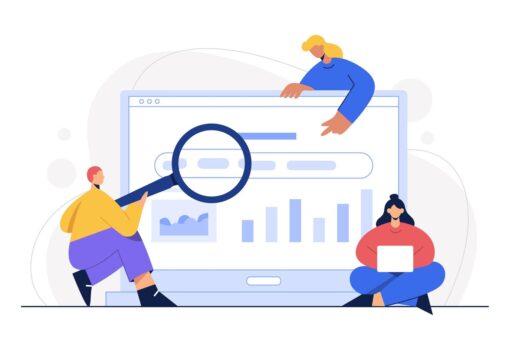50+ Metrics That Will Help You Gain
The Advantage Against Your Competition!
> NOTE: This blog post is focused on our E-COMMERCE clients as metrics will be different compared to our service based clients.
The blog post for our service based clients will be rolling out the week of January 31, 2022.
We always say to our clients that we’re entrepreneurs and business people, too. We understand first-hand that you have to make a hundred decisions – today.
But, the last thing you should worry about is not having the clear-cut data to be able to capitalize on opportunities that could catapult your business to the next level.
So, how did we get here?
Since Power Funnels’ inception in 2013, our team has accomplished many great things, such as:
- Successfully launching over 55 businesses
- Spearheading 3x New York Times Best Seller launches
- Working alongside with the top serial entrepreneurs, such as: David Keesee, Melonie Dodaro, Matt Astifan, Dave De Meyer, Mindy Paul
- And too many other accomplishments to list here! (You’ll be reading for awhile)
If you haven’t noticed already, Power Funnels is absolutely obsessed with client results, superior customer service, and digital innovation.
And, this leads us to the digital innovation aspect of Power Funnels Marketing Agency.
Ever since the Facebook ios-14 update which caused more headaches than one could imagine, we took it upon ourselves to be proactive and to innovate our analytics tracking process to ensure a better client experience, and a clear-cut reporting experience.
This is why we have been working diligently over the past 120 days on testing 9x comprehensive digital analytics tracking dashboards.
Although, we’ll be honest. It was a major challenge to find a suitable tracking dashboard which supported the variety of services that we offer to our clients.
Through immense research and testing, we finally identified and selected our official comprehensive analytics tracking system, and we’re very excited to share it with you!
Let’s get into it!
Our new analytics tracking dashboard is called Agency Analytics, and it’s been named as one of the top analytics tracking solutions digital marketing agencies which offer upwards of 6+ services such as Power Funnels.
How it Works:
- Before your next performance report date, you will receive an email from our marketing team sharing with your login information.
- Then, go to the Power Funnels website and you will see in the top right corner there is a “CLIENT LOGIN” button. Click on that button, and a new window will open with your client portal.
- Fill in your login information on the client portal page, and then you will automatically be redirected to your analytics dashboard.
The first thing that you should see is the “BUSINESS HEARTBEAT” section. (Refer below)
>NOTE: We would like to make it very clear that even though we’ve tested the analytics dashboard in detail, there may be glitches, changes and new features in the dashboards, process and metrics. What you are about to view is Version #1, and as time goes on and we receive client feedback, we will roll-out new versions to better improve our reporting and client experience.
If you come across any glitches and or have any questions, please email our marketing team: [email protected]
BUSINESS HEARTBEAT:
“BUSINESS HEARTBEAT” as you would assume is the essential heartbeat of your business, showing you the most important data from a quick glance.
NOTE:
- All metrics in BLUE are considered as “healthy” analytics. Healthy = Above industry / vertical average.
- All metrics in RED are considered “unhealthy” analytics. Unhealthy = Below industry / vertical average.
- By colour coding the healthy and unhealthy analytics, you will immediately discover the areas where there is opportunity, and the areas that need immediate fixing.
Included below are the key metrics of your Business Heartbeat and why you should care:
- Gross Sales: The total number of revenue, and does not include deductions of expenses and or overhead.
- Orders: The total number of official orders indexed by Shopify.
- Average Order Value: The average cost of each order, calculated by simply dividing the total revenue by the number of orders.
- Top Products Sold: The amount of times a product was sold, and is presented by the total purchases by product.
- Total Discounts: The total number of discounts applied manually and or automatically by Shopify for the specific time period.
- Total Refunds: The total number of refunds calculated which were applied manually and or automatically for the specific time period.
- Top Products Sold In Detail: A breakdown of the top products sold, by quantity, total sales, discounts, and net sales.
STORE ANALYTICS:
Next we get to the Store Analytics dashboard.
- Unique users To Store: The total number of unique (new) users that arrive on a Store, and spend time at least on 1 page.
- Total New & Repeat Users On Store: The total number of unique (new) users and repeat users who return to the store to consume at least 1 – 2 pages of content.
- Goal Completions: The total number of goals completed. Goals can be considered: Add-to-carts, Purchases and Opt-in sign-ups.
- Avg. Pages Viewed: The average number of pages viewed by a user.
- Avg. Time On Store: The average time a user spends on the store.
- Avg. Time on Page: The average time a user spends per page.
- Number of Bounces: The total number of users who arrived on a page of the store, and immediately left by closing their browser, and or searching for a new URL.
SEO:
- Trust score: This is a metric that Google’s algorithm scores when indexing and crawling your store. Google’s algorithm searches for hundreds of “criteria points”, but the most important ones can be considered: The total amount of quality of backlinks that your store has created, the uniqueness of the content on your store, the site health of your store (loading speed, code deficiencies), and the total amount of quality and relevant referring domains. A trust score of 50 and higher is considered great.
- Domain score: This is a metric that predicts how likely a store is to rank in search engine result pages (SERPs). Domain scores range from one to 100, with higher scores corresponding to greater likelihood of ranking. Domain authority between 40 and 50 is considered average, and between 50 and 60 is considered good and over 60 is considered excellent.
- Referring URLs: A referring URL is the URL of a web page that links to a page on your website, thus sending traffic to you.
- Backlinks: This is a metric also known as “inbound links”, “incoming links” or “one way links” – which essentially are links from one website to a page on another website. Google and other major search engines consider backlinks “votes” for a specific page. Pages with a high number of quality and relevant backlinks tend to have high organic search engine rankings.
- SEO Traffic: The total number of users who come from all SEO initiatives, such as: Backlinks and referring domains.
EMAIL MARKETING:
- Total subscribers (Master List): The total number of subscribers on the ESP.
- Total subscribers (Frequent Purchasers): The total number of subscribers who are frequent purchasers.
- Recent Emails & Their Performance: A detailed breakdown of the most recent emails published, and their performance. Metrics such as:
- Emails Sent: The total number of emails sent.
- Open Rate: The total number of emails opened. The average open rate percentage in E-commerce is 10%, but it entirely depends on the industry and vertical.
- Click Through Rate: Is the percentage of people who clicked on at least one link in your email message. The average CTR (click through rate) in E-commerce is 1.9%, but it entirely depends on the industry and vertical.
- Bounce Rate: The email bounce rate is the percentage of email addresses in a mailing list that did not receive promotional messages because the recipients’ mail servers returned them. The average bounce rate percentage in E-commerce is between 20 – 45%, but it entirely depends on the industry and vertical.
- Date Sent: The date that the email was sent.
- Unsubscribe Rate: The number of unsubscribes divided by the number of emails delivered. The average unsubscribe percentage in E-commerce is 0.27%, but it entirely depends on the industry and vertical.
SOCIAL MEDIA:
- Facebook Audience Growth: The total number of new users who liked the Facebook business channel.
- Facebook Engagements: The total number of users who engaged with the posts over the selected timeframe. Engagements are considered: Comments, reactions and shares.
- Facebook Organic Likes: The total number of people who like your Facebook page.
- Total Reach: The total number of people who have seen your content.
- Facebook Reviews: The total number of people who left you a review on your Facebook page.
PPC ADVERTISING – Google:
- Purchases: The total number of order purchases.
- Total Sales: The total aggregation of sales that have been generated.
- Ad Spend: The total advertising dollars you have invested to acquire sales through advertising.
- Return-On-Ad-Spend: The return on your advertising investment. This metric is calculated by dividing the total sales by the total advertising dollars. A healthy ROAS is 2X, and a ROAS above 4X is considered extremely successful
- Cost-Per-Conversion: The total cost it takes you to acquire a new customer. This metric is calculated by taking how much money is spent on an ad campaign, divided by the number of conversions (customers) over the same period. A healthy cost-per-conversion entirely depends on the industry, vertical and product type.
PAID SOCIAL ADVERTISING:
- Purchases: The total number of order purchases.
- Ad Spend: The total advertising dollars you have invested to acquire sales through advertising.
- Total Sales: The total aggregation of sales that you have generated.
- Return-On-Ad-Spend: The return on your advertising investment. This metric is calculated by dividing the total sales by the total advertising dollars. A healthy ROAS is 2X, and a ROAS above 4X is considered extremely successful
- Cost-Per-Purchase: The total cost it takes you to acquire a new customer. This metric is calculated by taking how much money is spent on an ad campaign, divided by the number of conversions (customers) over the same period. A healthy cost-per-conversion entirely depends on the industry, vertical and product type.
- Facebook Ad Clicks: The total number of times that your ads were clicked on.
- Total Number That Ads Were Viewed: The total number of times that your ads were viewed. This can be considered users scrolling on their timeline and scanning your ad, but not actually stopping to view it.
- Add To Carts: The total number of times that a user intended to purchase your product by adding it to their cart, but then aborting the transaction. Add to carts can happen because of a bad check-out experience, last-minute consumer doubt, high shipping costs etc.
Well, there you go! You’re probably as excited as us to be able utilize this data to maximize all marketing dollars spent, and to capitalize on every opportunity that comes your way.
For all of our e-commerce clients, we encourage you to log in to your client dashboard and begin reviewing your data for your most recent billing cycle.
NOTE: We would like to reiterate the following: Even though we’ve tested the analytics dashboard in detail, there may be glitches, changes and new features in the dashboards, process and metrics. What you are about to view is Version #1, and as time goes on and we receive client feedback, we will roll-out new versions to better improve our reporting and client experience.
If you come across any glitches and or have any questions, please email our marketing team: [email protected]
To your success!
-Power Funnels Marketing Team




